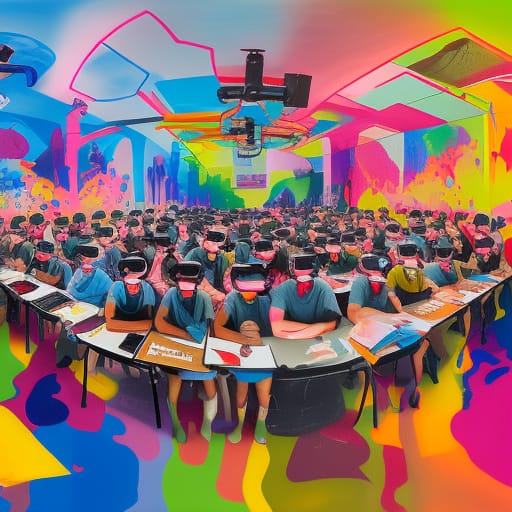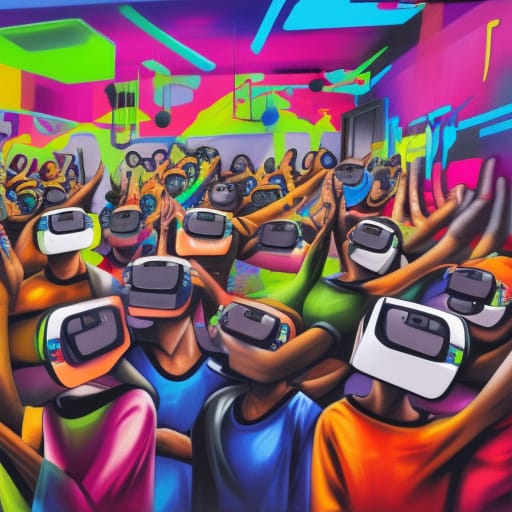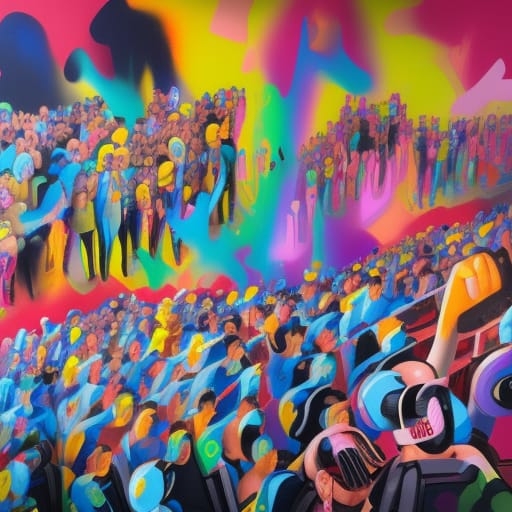In recent years, virtual reality (VR) has emerged as a groundbreaking technology with the potential to revolutionize various industries. One area where VR holds immense promise is in the field of education, particularly in K-12 classrooms. By immersing students in virtual environments, VR can enhance learning opportunities, engage students in interactive experiences, and foster a deeper understanding of complex subjects. Let’s explore how the integration of VR into K-12 education is transforming the learning landscape.

One of the key advantages of VR is its ability to transport students to places they might never have the chance to visit physically. By donning a VR headset, students can explore ancient civilizations, walk through the solar system, or even dive into the depths of the ocean—all from the comfort of their classroom. This immersive experience allows students to engage with content on a whole new level, igniting their curiosity and making learning more memorable.
Furthermore, VR provides a hands-on learning experience that is often difficult to replicate in traditional classrooms. For instance, students studying biology can use VR to examine the intricate details of a cell or witness the human body’s inner workings. By interacting with virtual objects, students can manipulate and dissect them, gaining a better understanding of complex concepts. Such interactive learning experiences foster critical thinking skills and encourage students to explore, experiment, and make connections.

Additionally, VR can cater to diverse learning styles, ensuring that students with different preferences and needs can thrive. Visual learners can benefit from the immersive visualizations, auditory learners can engage with accompanying sounds and narratives, and kinesthetic learners can interact physically with virtual objects. This multisensory approach not only promotes inclusivity but also maximizes student engagement, leading to a deeper understanding and retention of knowledge.
Moreover, VR can bridge the gap between abstract concepts and real-world applications. For instance, in mathematics, students can visualize geometric shapes in three dimensions, enabling them to grasp spatial relationships and solve problems more effectively. Similarly, in history, students can step into pivotal moments and gain a firsthand perspective, fostering empathy and historical understanding. By connecting theoretical knowledge to practical experiences, VR helps students see the relevance of what they are learning, making education more meaningful and impactful.

While the integration of VR in K-12 education offers immense potential, it is important to acknowledge the associated challenges. The cost of VR hardware and software, as well as the need for technical support and maintenance, can be a barrier for some schools. Additionally, ensuring that VR experiences align with curriculum standards and learning objectives requires careful planning and instructional design. Nonetheless, as the technology advances and becomes more accessible, these challenges can be overcome, enabling more schools to embrace the benefits of VR in education.
In conclusion, the integration of virtual reality into K-12 education holds great promise for enhancing learning opportunities. By immersing students in virtual environments, VR enables them to explore, interact, and understand complex subjects in new and engaging ways. From virtual field trips to interactive simulations, VR provides a transformative learning experience that caters to diverse learning styles and fosters critical thinking skills. As the technology continues to evolve, we can expect VR to become an integral part of classrooms, opening up a world of possibilities for students and educators alike.
*This blog post was written with the assistance of artificial intelligence.